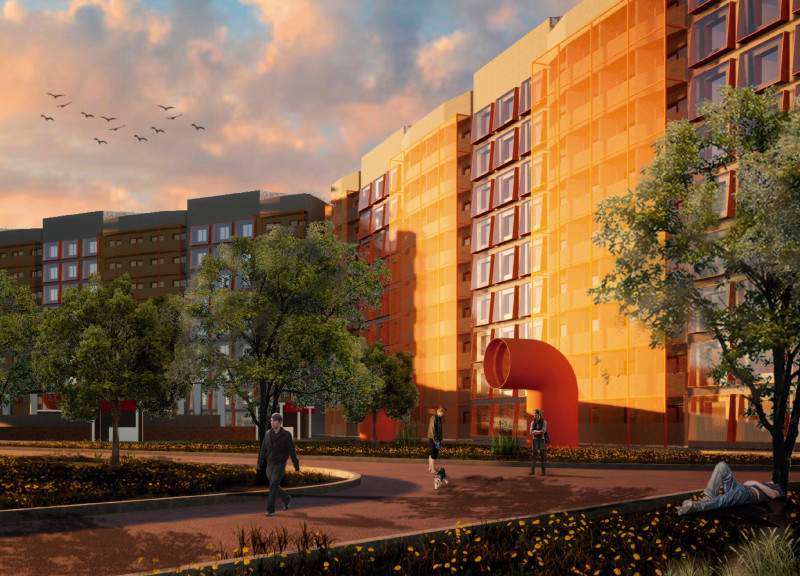5 key facts about this project
From the outset, the design of the building is emblematic of its purpose. It was conceived to accommodate a variety of functions, including residential, commercial, and public spaces. This multifaceted use ensures that it meets the diverse needs of the community, encouraging a dynamic blend of activities that contribute to the vibrancy of the area. The architectural forms create inviting spaces that encourage users to gather and collaborate, embodying the essence of the building's intent as a community focal point.
The project integrates seamlessly into its environment, with careful consideration paid to the surrounding landscape and urban fabric. The choice of materials reflects a commitment to sustainability while paying homage to local architectural traditions. Concrete, low-emissivity glass, galvanized steel, thermally modified timber, and fired clay brick together create a balanced and appealing aesthetic. Each material was selected not only for its functional properties but also for its ability to reflect the cultural identity of the area. The use of wood, for instance, introduces warmth and a connection to nature, while the concrete provides structural integrity and durability.
Notably, the design incorporates innovative strategies that emphasize energy efficiency and environmental responsibility. Passive solar techniques are employed to maximize natural light and reduce reliance on artificial lighting. The orientation of the building, coupled with strategically placed shading devices, minimizes heat gain, while landscape integration helps manage stormwater and enhance biodiversity. These smart design choices contribute to a reduced carbon footprint and a sustainable future for the community.
Architectural details are meticulously crafted to enhance user experience and ensure functionality. Entrance sequences are designed to be inviting, encouraging foot traffic and promoting a sense of accessibility. Public spaces are interspersed with visual and physical connections to the outdoors, fostering interaction with the natural environment. This deliberate interplay between indoor and outdoor spaces not only enhances the aesthetic appeal of the design but also promotes wellness among users.
The unique design approaches utilized in this project go beyond traditional methods. The blend of modern techniques with local craftsmanship results in a building that is both forward-looking and respectful of its heritage. The incorporation of smart technology throughout the building exemplifies a modern architectural ethos that prioritizes user comfort and operational efficiency. Features such as automated systems for lighting and climate control ensure that the building adapts to the needs of its occupants, enhancing the overall experience.
Furthermore, the project has garnered positive feedback from the community, which has embraced the new space. This reception speaks to the effectiveness of the design in addressing local needs while contributing to the cultural and social fabric of the area. The building stands as a testament to the potential of architecture to create spaces that nurture community cohesion and promote sustainable living.
This architectural project invites readers and stakeholders to delve deeper into its design and functionalities. Those interested in exploring the comprehensive architectural plans, sections, and innovative ideas that define this space are encouraged to examine the project presentation for a more detailed understanding of its design principles and impact. By engaging with the architectural details, one can appreciate the thoughtfulness embedded in every aspect of the project, underscoring the importance of architecture as a facilitator of community connections and environmental stewardship.


 Pablo Antonio Ramirez Bartolo
Pablo Antonio Ramirez Bartolo 






















